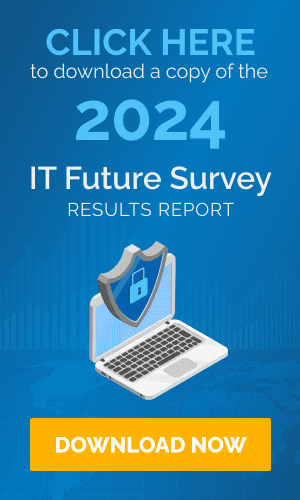Ransomware is now a service, and it’s putting every business at risk. Ransomware-as-a-Service (RaaS) is becoming a significant concern in the cybersecurity landscape. This model has transformed the way cybercriminals operate, making ransomware attacks more accessible and frequent. In this blog, we’ll explore what RaaS is, how it differs from traditional ransomware, how it works and strategies to prevent it from affecting your organization. We’ll also highlight how solutions like Kaseya VSA and Kaseya 365 are designed to fortify your systems and keep RaaS threats at bay.
What is ransomware-as-a-service?
Ransomware-as-a-service is a business model where cybercriminals develop ransomware and sell or lease it to affiliates, who then use the software to carry out attacks on targets of their choice. This model has significantly lowered the entry barrier for cybercriminals, enabling even those with minimal technical skills to launch sophisticated ransomware campaigns.
Although RaaS has been around for a while, it started gaining traction in the mid-2010s as cybercriminals realized the profitability and scalability of offering ransomware tools as a service. Cybercriminals began offering ransomware toolkits on dark web marketplaces, making it easier for less skilled individuals to launch ransomware attacks. The practice transformed ransomware from isolated attacks by individual hackers into a large-scale criminal business model.
This business model is structured similarly to legitimate software-as-a-service (SaaS) offerings, complete with subscription-based services, user-friendly interfaces and even customer support. RaaS allowed cybercriminals to create recurring revenue streams, and by 2020, ransomware attacks had generated an estimated $20 billion in global losses.
Uncover 10 powerful cybersecurity spells to banish ransomware threats and keep your network safe from digital scares.
How does RaaS differ from traditional ransomware?
Traditionally, ransomware attacks are typically carried out by the developers themselves. They handle everything from creating malware to executing the attack and collecting the ransom. In contrast, RaaS separates these roles. Developers create the ransomware and provide it to affiliates, who then carry out the attacks. This division allows for more attacks to occur simultaneously, increasing the overall impact.
How does ransomware-as-a-service work?
The RaaS model has quickly become one of the most dangerous trends in the cybersecurity world. By lowering the technical barrier to entry, it has allowed even amateur cybercriminals to launch sophisticated ransomware attacks with minimal effort. The service operates through a structured process involving four key steps:
- Ransomware development: Skilled cybercriminals or ransomware developers create sophisticated ransomware software designed to evade security systems and cause maximum damage. These developers continuously improve their malware to bypass evolving security measures. Prominent RaaS examples include REvil, DarkSide and LockBit, which have caused global ransomware incidents.
- Affiliate recruiting: Once the ransomware is developed, the creators recruit affiliates via dark web forums, encrypted messaging apps or private forums. These platforms operate like a criminal marketplace. Affiliates, often referred to as “partners” or “networkers,” may pay a one-time fee or a subscription fee or agree to share a percentage of the ransom profits with the developers. RaaS affiliates pay a recurring fee — sometimes as little as $40 per month — for access to ransomware tools. For instance, RaaS operations like Avaddon offer affiliates up to 80% of the profits, depending on the service model.
- Ransomware execution: Affiliates then handle the distribution of the ransomware. They employ various techniques, such as phishing emails, malicious downloads or exploiting security vulnerabilities, to infect a victim’s system. Once the malware infiltrates a network, it encrypts critical data, rendering it inaccessible to the victim until a ransom is paid. Notably, attacks by RaaS operators, such as DarkSide, led to high-profile incidents, like the Colonial Pipeline attack, which resulted in the company paying nearly $5 million in ransom.
- Payment and/or profit-sharing: After encryption, victims are directed to pay a ransom, typically in cryptocurrency like Bitcoin, in exchange for decryption keys. This anonymity makes tracking and prosecuting cybercriminals much harder. The profits are then split between the affiliate and the developer according to their agreement, with affiliates often taking a larger share. Some RaaS platforms even offer 24/7 support to their affiliates, making the process more streamlined and profitable.
Who are the typical targets of RaaS attacks?
While RaaS attacks can affect any organization, some types of targets are more frequently hit due to their specific vulnerabilities:
- Small to medium-sized businesses (SMBs): Attackers know that smaller businesses are less likely to have comprehensive defenses, such as endpoint protection or intrusion detection systems, making them vulnerable.
- Critical infrastructure: Sectors like energy, utilities, transportation and water management are targeted because disrupting these systems can cause widespread chaos, and organizations in these sectors may be willing to pay ransom quickly.
- Healthcare organizations: Hospitals and healthcare providers are prime targets due to the sensitive nature of the data they hold. The healthcare sector has seen a surge in ransomware attacks, especially during the COVID-19 pandemic, where interruptions could put lives at risk.
- Organizations with outdated security protocols: Companies that fail to update software regularly, install patches or improve their security systems are easy targets. Vulnerabilities in old systems are well-known to cybercriminals, making these organizations low-hanging fruit for RaaS affiliates.
- Educational institutions: Schools and universities often operate on tight budgets, making security improvements difficult. In addition, they rely heavily on online platforms, increasing their attack surface.
- Financial services: Banks, investment firms and insurance companies are appealing to cybercriminals because the stolen information can be sold on the dark web or used to commit financial fraud.
Concerned that your network might be at risk? Watch our on-demand webinar to discover how to leverage your RMM solution to defend against ransomware threats effectively.
What are real-life examples of ransomware-as-a-service?
Several RaaS groups have made headlines for their devastating and widespread attacks:
DarkSide
DarkSide emerged in 2020 and quickly gained notoriety for targeting large corporations. The group is most infamous for orchestrating the Colonial Pipeline attack, which caused fuel shortages across the United States. DarkSide employs a tactic known as double extortion, where they not only encrypt data but also threaten to leak it unless the ransom is paid, adding another layer of pressure on their victims.
LockBit
LockBit has been active since 2019 and is distinguished by its emphasis on speed and automation in ransomware deployment. The group made headlines when it targeted Accenture, a major consulting and professional services firm. LockBit’s self-spreading capabilities enable it to infect systems rapidly, making it particularly effective and dangerous.
REvil
REvil, also known as Ransomware Evil, has become infamous for its involvement in several high-profile attacks. One of the most notable incidents was its attack on JBS Foods, the world’s largest meat processor, which disrupted global food supply chains. REvil is known for demanding exorbitant ransoms, sometimes exceeding $40 million, and it often targets major enterprises.
Conti
Since 2020, Conti has been linked to over 400 attacks globally, demonstrating its operational scope. A key incident involving Conti was its attack on Ireland’s Health Service Executive (HSE), which severely impacted healthcare services. Conti is recognized for its fast encryption process and its use of highly targeted phishing emails to infiltrate networks, making it a persistent threat.
What has contributed to ransomware-as-a-service growth?
Several key factors have contributed to the rise of RaaS, making it one of the most profitable and pervasive cybercrime models today:
- Lowered barriers to entry: The RaaS model allows individuals with minimal technical expertise to participate in ransomware attacks by simply purchasing or subscribing to ransomware kits developed by skilled cybercriminals. These tools come with user-friendly interfaces, support systems and updates, making it easier than ever for non-experts to execute sophisticated cyberattacks.
- High profitability: Ransomware attacks often result in substantial ransom demands, typically ranging from tens of thousands to millions of dollars. The potential for large payouts with minimal overhead costs has made RaaS highly attractive to cybercriminals.
- Anonymity: The use of cryptocurrencies, like Bitcoin, for ransom payments, combined with encrypted communication channels on the darknet, makes it incredibly difficult for law enforcement to track cybercriminals and affiliates. This level of anonymity enables attackers to operate with relative impunity, lowering the risk of prosecution. Even when individual affiliates are caught, the decentralized nature of RaaS makes it difficult to dismantle the entire operation.
- Global reach: RaaS platforms can be marketed and distributed worldwide, meaning that cybercriminals are not restricted to geographic boundaries. This global reach exponentially increases the number of potential targets, from small businesses to large multinational corporations.
- Lack of adequate security measures: Many organizations still fail to update their security protocols regularly, leaving their systems vulnerable to attack. Outdated software, weak passwords and a lack of comprehensive cybersecurity policies create gaps that RaaS affiliates can easily exploit.
- High profitability with minimal risk: RaaS offers high profitability with relatively low risk. The decentralized nature of RaaS operations allows developers to stay insulated from direct involvement in attacks, while affiliates bear the brunt of the risk by distributing the ransomware. Even if one affiliate is caught, the larger operation continues, making it a resilient and sustainable business model for cybercriminals.
How to stop ransomware-as-a-service
Protecting your organization from RaaS involves a multilayered security approach:
- Patch Management and Software Updates: Regularly updating software fixes vulnerabilities and reduces the risk of breaches. Automated patch management tools ensure timely updates and minimize exposure to threats.
- Endpoint Protection and Security: Installing strong antivirus and antimalware solutions helps block malicious software. Firewalls and intrusion detection systems add extra security by monitoring and controlling network traffic.
- Threat Detection and Response: Continuous network monitoring identifies suspicious activities early. Having an incident response plan ensures swift action to minimize damage from breaches.
- Security Awareness Training: Educating employees on phishing and safe online practices reduces human error. Regular training and simulations reinforce this knowledge, helping to prevent attacks.
- Data Backup and Recovery: Regular backups protect critical data from loss. Storing backups offline or in secure cloud services ensures they remain safe from infection or attacks.
When it comes to fighting ransomware, investing in individual, siloed solutions can lead to gaps in security, inefficiency and extra costs. IT teams need integrated systems that seamlessly manage security, endpoints and operations from a single platform. Kaseya 365 offers exactly that — a unified solution that covers all the essential needs of an IT team. In the event of a cybersecurity attack, Kaseya 365’s automation and powerful integrations enable technicians to quickly isolate, quarantine and resolve the issue, effectively neutralizing ransomware threats in real-time.
Automatically detect and prevent RaaS attacks with Kaseya 365
Kaseya 365 simplifies IT management by combining endpoint management, backup, security and automation into one powerful, affordable platform. With features like automated patch management, ransomware detection and antivirus, it ensures your systems stay secure and up to date. Additionally, Kaseya 365 proactively safeguards your Microsoft 365 data with automated backup and recovery, minimizing downtime and mitigating the impact of ransomware attacks.
For those needing advanced protection, the Pro version includes endpoint detection and response (EDR) for an extra layer of defense against sophisticated threats.
At the heart of Kaseya 365 is Kaseya VSA, a robust and versatile remote monitoring and management (RMM) tool that automates critical tasks like patch management and ransomware detection. This allows you to manage your IT environment effortlessly, ensuring security and efficiency. Check out this on-demand webinar to learn how VSA can help fortify your defenses.
Strengthen your defenses and give your IT team peace of mind. Take a demo today and see how Kaseya 365 can transform your security strategy.



